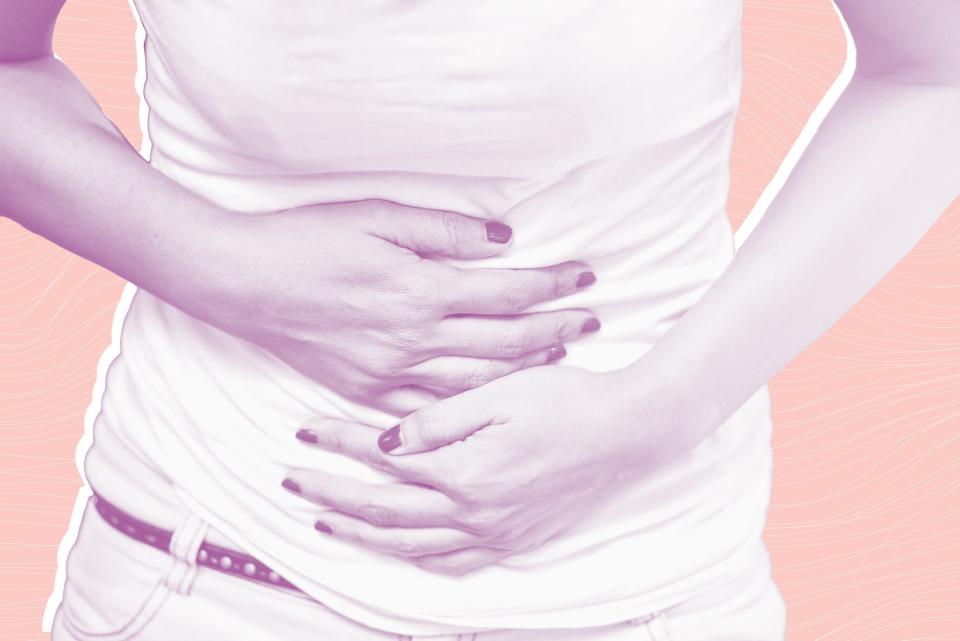Eating More Fiber Could Help Ease PMS Symptoms, According to Research
As a food and nutrition writer, I've been telling people that they need to eat more fiber long before anyone ever hyphenated "plant-based" and used it as an adjective for "diet." There are so many health benefits to eating enough fiber, but most of us still don't come close to the recommended 25 to 38 grams a day. And it probably has a lot to do with fiber's, ahem, image problem.
Related: 10 Foods with More Fiber Than an Apple
Fiber, the indigestible part of plant material—including fruits, vegetables, whole grains and legumes—is best known for helping food move along the GI tract. Which has made it virtually synonymous with one thing: going to the bathroom.
"You see so many commercials for fiber supplements to help with bowel movements, and as stool softeners and for constipation, but fiber's role is so vast in human health," says Nichole Dandrea-Russert, RDN, nutritionist and author of The Fiber Effect (buy it: $14.69 on Amazon). Especially now that research has begun linking gut health to a complex array of other conditions, she says, we're starting to see a link between fiber and overall health.
Fiber is a key prebiotic, which means it fuels the healthy bacteria in our guts that play a role in immunity. Eating more fiber has been linked to heart health and a longer lifespan. It may even help fight depression. But the one thing I never knew, is that fiber can help fight PMS.

Getty Images / boonchai wedmakawand
"Eating a high-fiber diet can help alleviate pain and cramping and moodiness around your period," says Dandrea-Russert. How? Well, these symptoms can be caused by excess estrogen, which triggers the release of compounds called prostaglandins. Prostaglandins cause the uterine lining to contract, which is fine under normal circumstances, but when you produce too many of these compounds, the cramping can get severe. Excess prostaglandins can also cause contractions in other smooth muscle tissue, like the stuff lining your GI tract, which is why women sometimes experience a phenomenon known as "period poops" (an actual medical term).
Related: 5 Easy Ways to Eat More Fiber
One of fiber's roles, though, is to bind to estrogen and flush it out of the body via the usual elimination route, avoiding over-production of prostaglandins and all those unpleasant side effects. (It may also be one reason a high-fiber diet has been linked to lower rates of breast cancer.)
It doesn't take much—in one study, women who increased their fiber intake from 23 to 31 grams per day reported a decrease in pain and bloating associated with PMS. To put it into perspective, you can get 8 extra grams of fiber from 2 tablespoons of chia seeds (well, 10 grams actually), 1 cup of raspberries, 1/2 cup of black beans or 1/2 of an avocado. (See more high-fiber food here.)
While soluble fiber, the kind found in oats, beans, apples and strawberries, serves this purpose best, Dandrea-Russert recommends eating as wide a variety of fiber-filled foods as possible, since different kinds feed different gut bacteria, and research shows that the more variety your microbiome has, the healthier it tends to be overall.
Oh, and if you're wondering about where all that excess estrogen comes from, some is from a poor diet, too. A diet high in certain fats, much like the standard American diet (SAD), can lead to estrogen dominance. Ideally, you want to get more omega-3 fats from sources like seafood, flax and walnuts, and cut back on omega-6 fats from processed vegetable oils (the kind often used in restaurants). Then, just add fiber, and goodbye to some of that pesky PMS! I guess fiber definitely isn't just for grandmas anymore.

